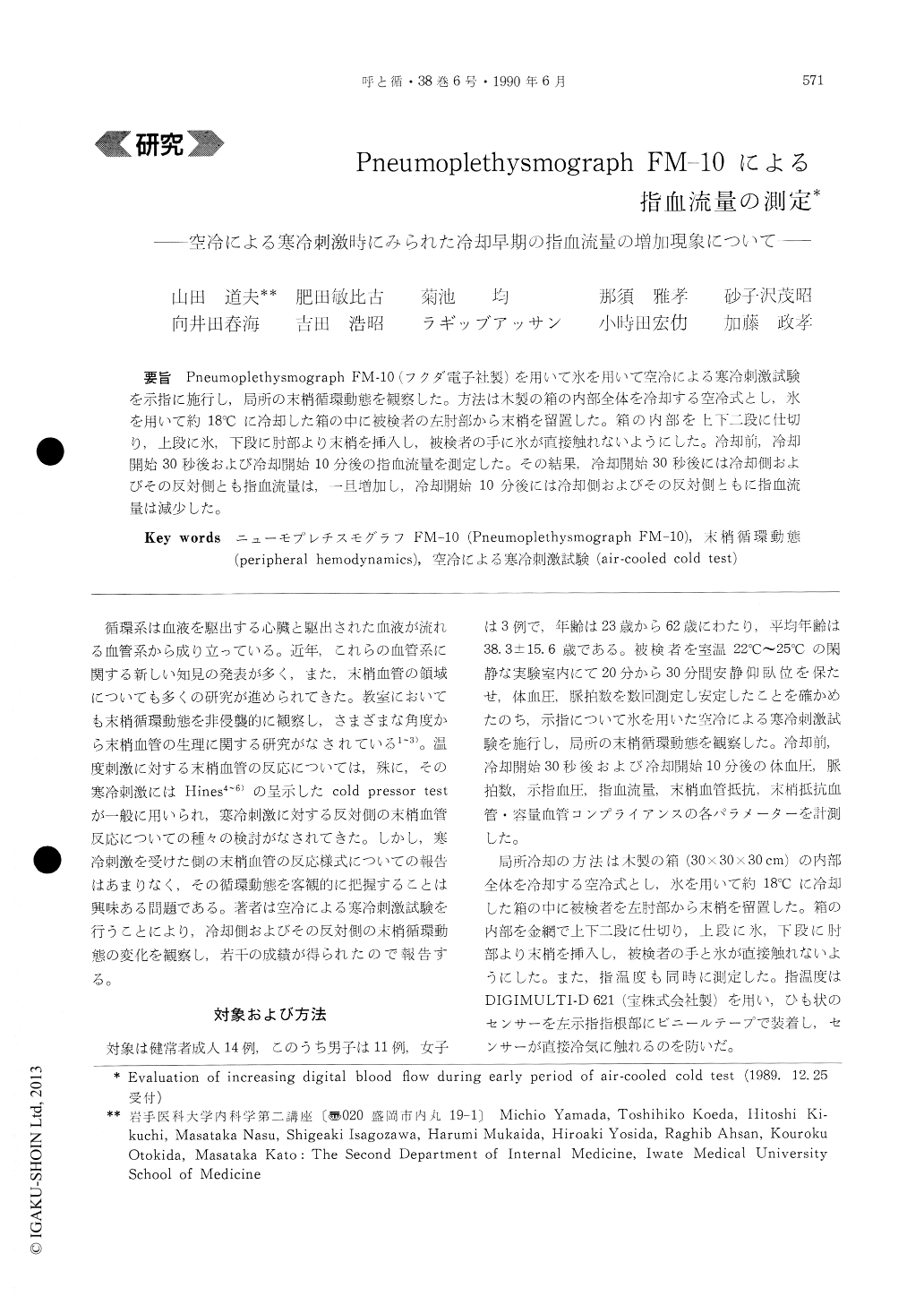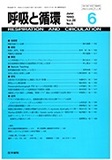Japanese
English
- 有料閲覧
- Abstract 文献概要
- 1ページ目 Look Inside
Pneumoplethysmograph FM-10(フクダ電子社製)を用いて氷を用いて空冷による寒冷刺激試験を示指に施行し,局所の末梢循環動態を観察した。方法は木製の箱の内部全体を冷却する空冷式とし,氷を用いて約18℃に冷却した箱の中に被検者の左肘部から末梢を留置した。箱の内部を上下二段に仕切り,上段に氷,下段に肘部より末梢を挿入し,被検者の手に氷が直接触れないようにした。冷却前,冷却開始30秒後および冷却開始10分後の指血流量を測定した。その結果,冷却開始30秒後には冷却側およびその反対側とも指血流量は,一旦増加し,冷却開始10分後には冷却側およびその反対側ともに指血流量は減少した。
The present study was performed to elucidate peripheral hemodynamic changes, especially, digital blood flow, caused by an air-cooled cold test. Experi-ments were carried out by placing the subject's left hand in a box that was kept at a temperature of about 18℃ by air-cooling. At the same time, the digital blood flow, digital blood pres sure, complian-ces of the peripheral resistance and capacitance ves-sels were measured. These parameters were measu-red on the left forefinger of the cooled side, and also on the opposite side according to Kato's method at 3 points, 1) at normal condition (defore cooling sta-ted). 2) 30 seconds after the cooling began and 3) 10 minutes after the cooling began.
The following results were obtained; 1) The sys-temic blood pressure, digital blood pressure and heart rate showed no statistically significant diffe-rences in measurements taken at the above three stages.
2) The mean value of the digital blood flow was found to have increased after 30 seconds, and to have decreased after 10 minutes of cooling. Statistically, significant differences were noted at the above three stages.
3) The mean value of the peripheral vascular resis-tance was found to have increased after 30 seconds, and to have decreased after 10 minutes.
4) Compliances of the peripheral resistance vessel and capacitance vessel showed no significant changes on either side except between normal condition and after 10 minutes of cooling.

Copyright © 1990, Igaku-Shoin Ltd. All rights reserved.


